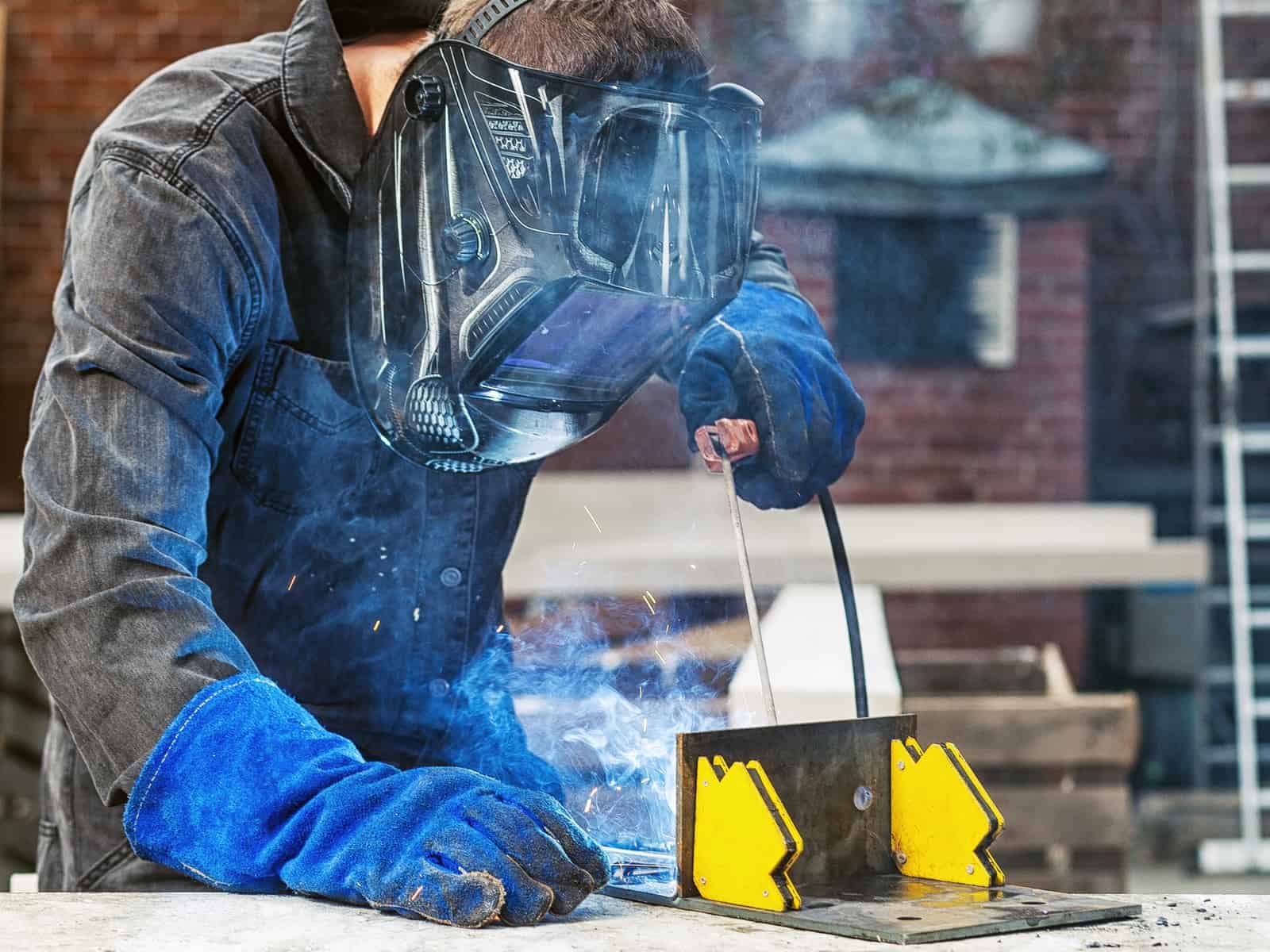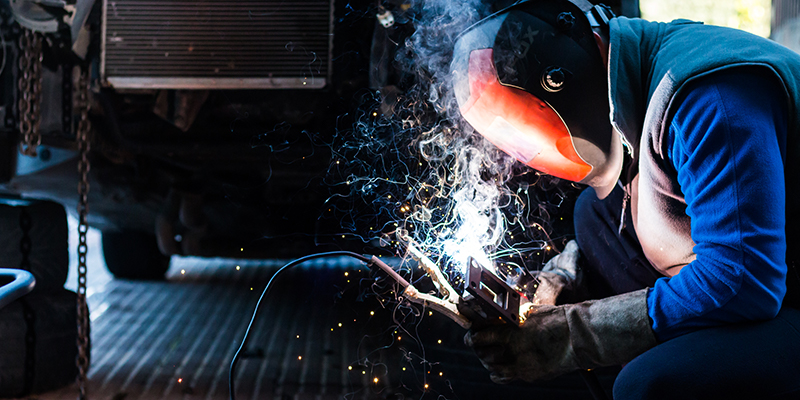Usual Welding Repair Service Issues and Just How to Address Them Efficiently
Welding repairs often encounter a variety of concerns that can threaten the honesty of the end product. Usual issues include insufficient infiltration, porosity, and imbalance, to name a few. Each defect presents one-of-a-kind difficulties that require particular strategies for resolution. Recognizing these concerns is essential for welders intending to enhance their end results and skills. This conversation will explore these common welding repair problems and efficient techniques to resolve them.
Poor Infiltration
Insufficient infiltration happens when the weld steel falls short to fully fuse with the base material, causing weak joints and potential structural failings. This issue usually originates from not enough warmth input, inaccurate electrode angle, or incorrect welding rate. Welders might run into inadequate penetration due to a mistake of the necessary specifications for a specific material density or type. In addition, contamination on the base material's surface area can impede effective bonding, intensifying the problem. To address inadequate penetration, welders should ensure appropriate settings on their tools and keep a clean job surface area. Normal assessment of welds is suggested to determine any kind of shortages early, permitting timely adjustments and the avoidance of compromised architectural integrity in welded assemblies.
Porosity
Porosity is a typical problem in welded joints that manifests as tiny gas bubbles trapped within the weld steel. This defect can jeopardize the integrity of the weld, bring about lowered stamina and prospective failing under stress and anxiety. Montana Mobile Welding and Repair Belgrade. Porosity commonly develops from contamination, wetness, or inappropriate welding methods, which enable gases to get away right into the molten weld swimming pool. To address porosity, welders must ensure correct surface preparation, preserve a tidy workplace, and use ideal welding specifications. In addition, selecting the right filler product and protecting gas can reduce gas entrapment. Routine inspection and testing of welds can assist identify porosity early, ensuring timely corrective activities are taken, therefore protecting the top quality and dependability of the bonded framework
Misalignment
Imbalance in welding can occur from numerous variables, including incorrect configuration and thermal growth. Understanding the source is necessary for reliable resolution. Several improvement methods are readily available to realign parts and ensure architectural honesty.
Sources of Misalignment
Welding imbalance usually originates from a variety of underlying issues that can compromise structural stability. One main cause is incorrect fit-up of components before welding, which can lead to voids and unequal surface areas. Variations in thermal expansion throughout the welding procedure can additionally lead to distortion, especially if the products being joined have various coefficients of expansion. Furthermore, poor fixturing and securing might fail to hold elements safely in position, causing activity throughout welding. Badly maintained tools, consisting of welding equipments and devices, might introduce variances in the weld grain, further contributing to imbalance. Operator mistake, stemming from insufficient training or experience, can likewise play a substantial duty in developing misaligned welds.

Adjustment Methods Readily Available
Attending to misalignment successfully calls for a mix of corrective techniques tailored to the certain issues available. One usual approach is the use of fixtures or jigs to hold elements in the correct setting during welding, making certain consistent positioning. Additionally, pre-heating the products can assist lower distortion and boost fit-up. For substantial misalignment, mechanical realignment techniques, such as utilizing hydraulic jacks or clamps, can be utilized to remedy the setting before welding. Post-weld heat therapy might also be essential to relieve tensions created by misalignment. Careful examination and change throughout the setup phase can avoid misalignment concerns from becoming significant problems, promoting a smoother welding process and improving total structural integrity.
Distortion
Distortion is a typical challenge in welding that can develop from various factors, consisting of uneven cooling and heating. Recognizing the reasons for distortion is crucial for carrying out efficient prevention techniques. Resolving this concern not just enhances architectural stability however also improves the general top quality of the weld.
Reasons of Distortion
When based on the extreme warmth of welding, products commonly undertake changes that can lead to distortion. This phenomenon mainly arises from thermal expansion and contraction during the welding procedure. As the weld area heats up, the material increases; upon cooling, it contracts, which can develop interior tensions. Furthermore, unequal heating across a work surface can aggravate these anxieties, resulting in warping or bending. The sort of product additionally plays a significant duty; steels with varying thermal conductivity and coefficients of development might respond differently, leading to uncertain distortions. Inadequate joint layout and poor fixturing can add to misalignment throughout welding, boosting the possibility of distortion. Understanding these causes is necessary for reliable welding repair and prevention strategies.
Prevention Techniques
Efficient avoidance techniques for distortion throughout welding concentrate on managing warmth input and guaranteeing appropriate joint layout. Keeping a regular warmth input aids to decrease thermal growth and tightening, which can result in distortion. Using techniques such as pre-heating the work surface can likewise lower the temperature slope, promoting uniform heating. In addition, picking proper joint layouts, such as T-joints or lap joints, can improve stability and minimize stress focus. Carrying out correct fixturing to safeguard the work surfaces in position further help in preserving positioning throughout the welding procedure. Lastly, staggered welding series can disperse heat extra uniformly, preventing local distortion. By applying these methods, welders can considerably lower the chance of distortion and boost the general quality of their welds.
Fracturing
Splitting is a common concern run into in welding repair services, usually arising from various aspects such as incorrect cooling prices, material selection, or poor joint preparation. The occurrence of fractures can substantially compromise the stability of the weld, resulting in potential failures during procedure. To resolve this problem, welders must initially examine the source, making certain that materials work and suitably chosen for the specific application. Furthermore, managing the cooling rate throughout the welding process is vital; quick air conditioning can generate anxiety and bring about cracking. Proper joint design and preparation likewise add to lessening the risk. Executing these techniques can boost weld top quality and resilience, ultimately lowering the chance of splitting in finished weldments.

Incomplete Combination
A significant concern in welding repair work is incomplete fusion, which takes place when the weld steel does not effectively bond with the base material or previous weld passes - Montana Mobile Welding and Repair. click here now This issue can result in weaknesses in the joint, possibly jeopardizing the stability of the bonded structure. Aspects adding to incomplete fusion include insufficient warmth input, improper welding method, and contamination of the surface areas being joined. To address this problem effectively, welders need to ensure proper pre-weld cleansing and surface prep work, in addition to change their welding criteria to achieve sufficient infiltration and blend. Normal examination throughout the welding process can also aid determine insufficient blend early, enabling for timely rehabilitative steps to improve the general high quality of the weld
Overheating
While welding repairs can enhance structural integrity, overheating offers a considerable challenge that can bring about material deterioration. Excessive heat during welding can modify the mechanical buildings of metals, leading to minimized stamina, increased brittleness, and warping. Full Report This sensation is especially crucial in high-stress applications where architectural integrity is vital. Recognizing overheating can include visual inspections for discoloration or distortion, in addition to keeping track of temperature level throughout the welding procedure. To minimize the risks related to getting too hot, welders should employ ideal methods, such as regulating warmth input, readjusting travel speed, and utilizing ideal filler products. In addition, executing pre- and post-weld heat therapies can assist bring back product properties and improve the general quality of the repair, making sure long-term performance and safety.
Regularly Asked Inquiries
What Are the Typical Signs of a Welding Flaw?

Just How Can I Examine My Welds for Top quality?
To examine welds for quality, one can make use of visual inspections, ultrasonic screening, and radiographic methods. Each method ensures architectural integrity, identifies issues, and verifies adherence to defined criteria, ultimately boosting the dependability of the welded joints.
What Safety Safety Measures Should I Take While Welding?
When welding, one ought to focus on safety by wearing suitable individual protective equipment, making sure correct ventilation, safeguarding combustible materials away, keeping a tidy workspace, and understanding environments to stop injuries and crashes.
Can I Repair a Weld Without Redoing the Entire Joint?
Fixing a weld without renovating the whole joint is possible, relying on the damages (Montana Mobile Welding and Repair Belgrade Welding). Methods such as news grinding, adding filler material, or utilizing a welding procedure can properly attend to certain imperfections while protecting the bordering framework
What Tools Are Necessary for Efficient Welding Fixes?
Crucial devices for efficient welding repair work include a welding equipment, cord brush, grinder, safety equipment, clamps, and filler products. Each tool plays an important function in ensuring quality and security during the repair service process. Porosity generally emerges from contamination, dampness, or incorrect welding methods, which allow gases to get away into the molten weld pool. Improperly maintained devices, including welding devices and devices, might present disparities in the weld bead, more adding to misalignment. When subjected to the extreme warmth of welding, products often go through changes that can lead to distortion. Breaking is an usual issue encountered in welding repairs, often resulting from different elements such as inappropriate cooling prices, material selection, or insufficient joint prep work. A significant concern in welding repair work is incomplete blend, which takes place when the weld metal does not appropriately bond with the base material or previous weld passes.